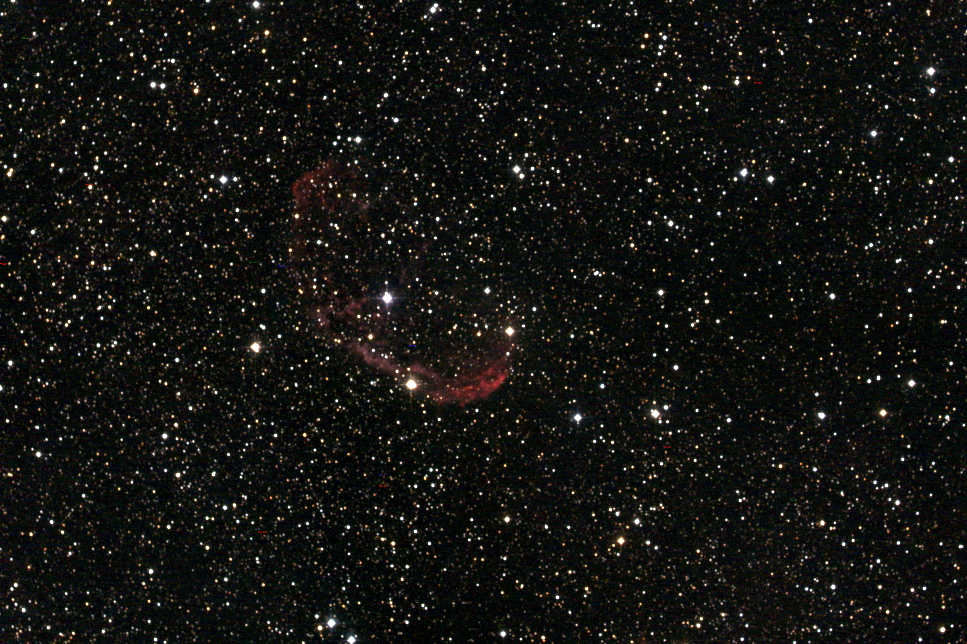The famous Crescent Nebula is listed as NGC 6888 in the New General Catalog of nebula and clusters of stars. As astronomers currently believe, a hot Wolf-Rayet star in the center of the nebula causes this "bubble" blown of stellar wind. The nebula is embedded into a large H-II region within the Cygnus star constellation. This H-II region is not a recommended target for beginners in astrophotography, but for those who look for a new challenge. Amateur astronomers recently discovered a new candidate of a very faint planetary nebula close to NGC 6888. The new planetary nebula is named Soap Bubble Nebula or PN G75.5+1.7 (not shown in my picture).
A guiding telescope with auto-guider supports accurate guiding. Here I used an Orion starshoot autoguiding camera. A compact Cassegrain like the Vixen VMC110L combined with an auto-guider and mounted piggypack onto my photographic VC200L main telescope offers great stability and fun with exposure times beyond 1 hour. The camera should provide a reasonable spectral response in the red light of the hydrogen Hα emission line. A modified digital single lens reflex cameras (DSLR) or dedicated CCD cameras are preferred imaging devices for this class of hydrogen emission nebula.
Observational Notice
Unfortunately, NGC 6888 is one of those famous objects on the night sky which are left out in the Vixen Starbook database of celestial objects. However, with a careful adjustment of the Sphinx SXD telescope mount and manual input of the celestial coordinates of NGC 6888 at the Simbad database, it is possible to take pictures of the nebula. With an exposure time of only 2 minutes per raw frame the nebula did not appear on the display monitor of the camera. Thus, the pictures have been taken blindfolded and processed later.
Observational data
| Telescope: | Vixen VC200L, focal reducer f/6.4, Sphinx SXD |
| Camera: | Canon EOS 40D-a, 400 ISO, Astronomik UV/IR block filter |
| Exposure: | 25 x 120 s, 6 frames manually rejected due to tracking errors. |
| Calibration: | Dark (50 images), sky flatfield (50 images) |
| Image Processing: | Shift & add with correction of subpixel movement, improved noise reduction |
| Date of exposure: | 21 August 2010, 00:15 h MEZ |
| Software: | ArgusPro SE |
| Remark: |
Moon light introduced a certain background brightness (corrected) |

